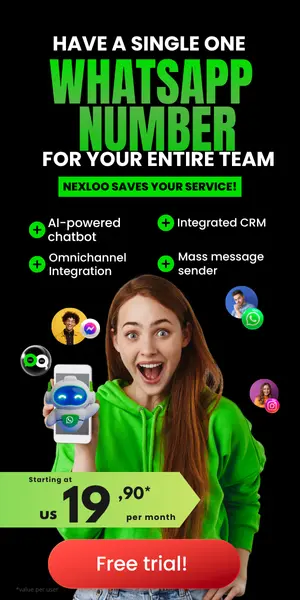When it comes to driving sales performance, one must consider the various tools and strategies available to enhance productivity and motivation among sales teams. In a competitive business environment, understanding the intricacies of sales incentive campaigns can be the key difference between average and outstanding results. These campaigns are not just about handing out bonuses; they are strategic initiatives crafted to align with an organization’s broader goals while fostering an engaged and high-achieving sales force.
This article delves into the mechanics of effective sales incentive campaigns, exploring the essential components that make them successful. It will provide insights on how to implement these strategies tailored to your organization’s needs. The information presented will help you create an enticing framework that excites and motivates your sales teams, ultimately driving performance optimization and achieving your sales objectives.
As we navigate through different elements of sales incentives—from setting measurable goals to understanding the importance of communication—this guide aims to pique your interest in improving your sales strategies. By the end, you will not only have actionable insights but also discover how to craft campaigns that resonate well with your team, leading to sustained motivation and better results.
Understanding Sales Incentive Campaigns
Sales incentive campaigns are strategic initiatives designed to motivate and reward sales teams for achieving specific performance goals. These campaigns are essential for driving sales optimization within organizations, as they encourage team members to surpass targets and enhance overall productivity. Understanding the mechanics behind these campaigns allows business owners and sales managers to implement effective strategies that align with their organizational objectives.
At the core of a sales incentive campaign is the identification of clear, measurable goals. These goals should be realistic yet challenging, tailored to motivate sales teams without overwhelming them. Common objectives may include increasing sales volume, expanding market reach, improving customer retention, or launching new products successfully. Establishing these targets not only provides direction but also serves as a benchmark for evaluating performance outcomes throughout the campaign duration.
Effective campaigns utilize a variety of incentive types to appeal to different motivators among sales staff. Monetary rewards, such as bonuses or commission increases, are often the most straightforward incentives. However, non-monetary rewards, including recognition programs, trips, or gifts, can also significantly impact team motivation and morale. Personalization of incentives can further enhance engagement, as different team members may respond uniquely to various types of rewards.
Communication plays a vital role in the success of sales incentive campaigns. Regular updates on progress toward goals, alongside reminders of the incentives available, help maintain enthusiasm and encourage healthy competition among team members. Additionally, providing feedback and recognizing individual and team achievements fosters a culture of appreciation and accountability. This can lead to sustained motivation, ensuring that the sales team remains focused and driven throughout the incentive campaign.
The Importance of Sales Optimization
Sales optimization is a crucial aspect of driving successful campaigns, especially for business owners and sales managers aiming to enhance revenue and streamline their processes. Effective sales optimization not only maximizes the potential of existing resources but also improves team performance and customer satisfaction. In today’s competitive marketplace, businesses that invest in optimizing their sales strategies are better positioned to achieve their objectives and adapt to changing customer needs.
One of the primary benefits of sales optimization is the ability to identify the most effective sales channels and tactics. By analyzing data related to past campaigns, businesses can determine which strategies yield the highest conversion rates and customer engagement. Armed with this knowledge, companies can allocate their resources more efficiently and focus on high-impact activities, leading to improved campaign outcomes. This analytical approach allows sales teams to tweak their methods based on real-time feedback, making necessary adjustments that can boost performance and ROI.
Furthermore, a focus on sales optimization helps to align the sales team’s goals with the broader objectives of the organization. By fostering a culture of collaboration and transparency, leaders can ensure that each team member understands their role in the success of the campaign. This includes not only attending to sales metrics but also emphasizing customer relationships and service quality. When everyone is pulling in the same direction, it creates a more unified effort that enhances productivity and morale.
In addition to improving sales processes, optimization can lead to better customer experiences. By analyzing customer feedback and behavior, businesses can tailor their messaging and offerings to directly address pain points and desires. This customer-centric approach not only boosts loyalty and retention but also paves the way for increased referrals, further enriching the sales pipeline. As customers feel more valued, their likelihood of returning and recommending the brand to others significantly increases, reinforcing the importance of incorporating sales optimization in every campaign strategy.
Key Elements of a Successful Sales Incentive Campaign
A successful sales incentive campaign is built on several key elements that ensure effectiveness and engagement from the sales team. Understanding these components is vital for business owners, sales managers, and customer service professionals looking to optimize their sales strategies. One of the primary elements is clear communication of goals. Sales teams must understand the incentive structure, the objectives they are tasked to achieve, and how their efforts will contribute to the overall success of the organization. Establishing specific, measurable targets allows the team to focus their efforts in alignment with broader business goals, making it easier to track progress and results.
Another essential aspect is the design of appealing rewards. Incentives should be desirable and relevant to the sales team. Whether it’s cash bonuses, trips, gifts, or additional time off, the rewards should motivate the team to exceed their targets. Tailoring rewards to the preferences and motivations of the team can significantly enhance participation and performance. Additionally, it’s crucial to ensure that rewards are not only attractive but also attainable. Overly ambitious targets can lead to frustration and disengagement; thus, finding a balance between challenge and achievability is key.
Moreover, incorporating a timeline for the campaign can amplify its success. A defined start and end date not only creates a sense of urgency but also gives salespeople a clear timeframe within which to operate. Regular progress updates can keep everyone motivated and engaged. These updates can take the form of leaderboards or progress tracking dashboards that allow participants to see their standings in relation to their peers, fostering healthy competition and accountability.
Lastly, feedback and recognition are integral. Post-campaign debriefs create an opportunity to celebrate successes, analyze what worked and what didn’t, and gather insights for future campaigns. Recognizing top performers publicly can boost morale and encourage a culture of excellence within the sales environment. This strategic approach ensures that sales incentive campaigns not only motivate but also contribute positively towards a sales-driven culture, ultimately leading to enhanced sales optimization and overall business growth.
Steps to Create a Sales Incentive Campaign
Creating a successful sales incentive campaign is essential for driving engagement, improving performance, and achieving goals within your business. To start, identify the objectives of your campaign. Clearly define what you want to achieve, whether it’s boosting overall sales, increasing product uptake, or improving customer retention. Establishing specific, measurable goals ensures that your incentives align with your broader sales optimization strategies.
Once the objectives are set, determine your target audience. Knowing whether you are incentivizing your sales team, channel partners, or even customers will influence the design and delivery of the campaign. Tailor your approach based on their preferences, motivations, and behaviors. For instance, the incentives for a sales team may differ significantly from those for consumers, who may be more responsive to discounts or gifts.
The next step is to select the right incentive structure. There are various types of incentives to consider, such as monetary bonuses, gift cards, or even travel rewards. Choose incentives that resonate with your audience and motivate them to achieve the desired outcomes. If possible, involve your team in the decision-making process to gain insight into what would inspire them the most. Combine different types of incentives to create a more engaging and attractive package.
Lastly, develop a clear communication strategy to announce and promote your campaign. Inform your participants about how they can earn those incentives, what the criteria are, and the timelines involved. Utilize multiple channels to ensure information is widespread and accessible, such as email, social media, and internal communication platforms. Keep participants engaged throughout the duration of the campaign with regular updates, leaderboards, and motivational messages. By following this structured approach, you can create a powerful sales incentive campaign that not only drives results but also boosts morale and enhances overall performance.
Creative Ideas for Sales Incentive Programs
Create effective sales incentive campaigns can significantly boost motivation and performance among sales teams. Here are ten creative ideas that can help you design compelling sales incentive programs that lead to enhanced sales optimization.
1. Tiered Commission Structure: Introduce a tiered commission system where sales representatives earn higher percentages as they reach specific sales milestones. This approach encourages healthy competition and drives sales teams to exceed their targets.
2. Team-Based Incentives: Foster collaboration by implementing team-based rewards. Set collective sales goals, and when the team achieves them, offer a reward such as a team outing or a special celebration. This idea promotes camaraderie and can lead to a more motivated workforce.
3. Spot Bonuses: Implement spot bonuses for outstanding sales performances or exceptional customer feedback. These one-time monetary rewards can serve as immediate recognition and motivate employees to consistently go above and beyond.
4. Sales Leaderboard: Create a visible sales leaderboard to track performance. The top performers can earn prizes each month, such as gift cards, tech gadgets, or additional days off. This gamification of sales helps to motivate employees through friendly competition.
5. Product Experience Rewards: Offer unique experiences related to your products as incentives. For instance, if your company sells outdoor equipment, reward high achievers with a weekend camping trip. This not only rewards employees but also deepens their connection to the products.
6. Education and Training Opportunities: Provide sales team members access to professional development courses, certifications, or industry conferences as incentives. This not only enhances their skills but also shows your investment in their growth, which can lead to increased loyalty and performance.
7. Referral Programs: Encourage sales staff to bring in new clients by offering incentives for successful referrals. These could be cash bonuses, extra vacation days, or exclusive experiences. This not only boosts sales but also expands your customer base.
8. Seasonal Challenges: Create seasonal sales challenges that align with holidays or company events. These time-bound campaigns can ignite excitement and focus sales staff on maximizing performance during high-potential periods.
9. Recognition Programs: Develop a program that recognizes and celebrates consistent performers. Monthly or quarterly awards can highlight achievements and provide public acknowledgment, increasing morale and motivating others to strive for recognition as well.
10. Customized Rewards: Allow team members to choose their rewards from a curated selection based on personal preferences or interests. Customization can lead to more meaningful incentives and enhances engagement, as employees feel valued for their unique contributions.
Implementing these creative incentive ideas can lead to a more engaged sales team while driving sales performance. By understanding what motivates your team and acknowledging their hard work, you can create a thriving atmosphere that fosters both individual and organizational success.
Measuring the Success of Sales Incentive Campaigns
Measuring the success of your sales incentive campaign is crucial to understanding its effectiveness and overall impact on your organization. To achieve this, business owners, sales managers, and customer service professionals must employ a comprehensive approach that combines various metrics to assess performance accurately. The first step is to set clear and measurable objectives at the outset of the campaign. These objectives should align with broader sales goals and can include targets such as increased revenue, improved customer engagement, or higher conversion rates. By defining specific outcomes, you can establish a robust framework for measuring success.
One of the primary metrics for evaluating sales incentive campaigns is the sales growth rate during the campaign period compared to a previous baseline. Analyzing this data allows you to identify the impact of incentives on sales performance. Additionally, tracking participation rates can provide insights into team engagement levels. A higher participation rate often indicates that your incentive strategy resonates with your sales team, while lower engagement may signal the need for campaign adjustments or improvements.
Another important aspect to consider is customer retention and satisfaction. Use customer feedback and metrics such as net promoter scores (NPS) to assess how the incentives are affecting not only sales but also customer relationships. If you find that customer satisfaction dips alongside a surge in sales, it might indicate that the campaign’s focus could be misaligned, potentially jeopardizing long-term relationships for short-term gains. Balancing these measures is key to optimizing sales efforts and maintaining customer loyalty.
Finally, consider leveraging analytics tools to continually monitor and adjust your strategies. Many customer relationship management (CRM) systems come equipped with analytical features that can help you track and analyze sales data in real time. This allows for ongoing adjustments to your campaign, ensuring you maximize your return on investment (ROI). By regularly reviewing these metrics, you can refine your approach based on what works and what doesn’t, ultimately leading to more successful sales incentive campaigns over time.
Avoiding Common Mistakes in Sales Incentive Campaigns
Sales incentive campaigns can significantly boost motivation and performance among sales teams, but several common mistakes can undermine their effectiveness. One frequent error is the misalignment between the incentive structure and business goals. It’s crucial that the incentives motivate behaviors that directly contribute to those goals. If the incentives are not tied closely to the desired outcomes, salespeople may pursue actions that do not benefit the organization, leading to wasted resources and diminished returns on the campaign.
Another common pitfall is setting unrealistic goals. While it’s important to stretch your team’s abilities, setting targets that are too ambitious can lead to frustration and demotivation. Ensure that the goals are attainable and based on realistic expectations of the sales team’s capabilities. This requires an understanding of past performance trends and market conditions to create targets that challenge yet inspire your sales force.
Communication issues can also sabotage the success of an incentive campaign. If the objectives, rules, and rewards of the campaign are not clearly communicated, team members may feel confused or disenfranchised. Providing a comprehensive how-to guide that outlines expectations and rewards can eliminate ambiguity and create transparency. Being proactive about addressing questions and feedback during the campaign can further enhance commitment and engagement from your sales team.
Lastly, neglecting to measure and analyze the results of the incentive campaign can inhibit future success. Data analysis provides insights into what worked and what didn’t. By failing to track key metrics, you miss valuable opportunities to refine your strategies for subsequent campaigns. Implementing a robust review process to examine outcomes can inform better practices, ensuring future initiatives align more closely with sales optimization objectives and drive even greater productivity.
Successful Examples of Sales Incentive Campaigns
Successful sales incentive campaigns can transform a company’s performance and boost revenue significantly. One notable example is the “Million Dollar Challenge” created by a leading technology company. They offered a huge financial reward to the sales team that could generate the highest revenue in a quarter. This campaign fostered healthy competition among the team members, driving them to develop innovative sales strategies and deepen customer relationships. As a result, the company saw a 40% increase in revenue compared to the previous quarter, showcasing how effective incentives can drive sales optimization.
Another successful example is a travel company that launched a tiered incentive program for its agents. Each tier offered progressively larger rewards, ranging from luxury vacations to exclusive training experiences. This structure not only motivated agents to exceed their sales targets but also encouraged them to collaborate and share successful tactics among their peers. The campaign resulted in a remarkable 25% uplift in overall bookings and a substantial increase in customer satisfaction, illustrating the potential of incorporating teamwork into sales initiatives.
The automotive industry has also seen great success with sales incentives, such as a leading car manufacturer that implemented a sales contest where dealerships competed for prizes based on their monthly sales figures. By providing attractive rewards such as new cars and exclusive experiences, the manufacturer inspired dealerships to sell more vehicles than ever. The initiative led to a 30% growth in sales across participating dealerships and strengthened relationships between the manufacturer and its partners, underlining the impact of exciting and achievable incentives.
Additionally, a prominent e-commerce platform ran a unique sales incentive campaign targeted at its affiliate marketers. They introduced a temporary increase in commission rates for the highest-performing affiliates over a quarter. This campaign not only incentivized partners to push their sales efforts but also resulted in an 80% increase in affiliate-driven revenue. The short-term boost illustrates the effectiveness of direct financial rewards in generating substantial sales growth while also enhancing loyalty between the company and its affiliates.
In conclusion, these real-life examples demonstrate that well-structured sales incentive campaigns can yield remarkable results in various industries. By fostering competition, collaboration, and attractive rewards, businesses can motivate their sales teams to achieve greater performance and optimize outcomes.
Adapting Sales Incentive Campaigns to Different Markets
Adapting your sales incentive campaign to different markets and audiences is crucial for maximizing effectiveness and ensuring the success of your initiatives. Each market comes with its own unique characteristics and preferences, which demand tailored approaches in order to resonate with potential customers. This customization can significantly improve sales optimization, as it allows your business to forge stronger connections and drive better results.
Begin by conducting market research to understand the distinct demographics, cultural values, and buying behaviors of your target audience. Utilize surveys, focus groups, and social media insights to gather information about potential preferences. By identifying key factors such as local customs, economic conditions, and competitive landscapes, you can create incentives that appeal directly to the needs and desires of your audience. This step is essential in ensuring that your campaign is not only relevant but also engaging.
When designing your incentive structure, consider the types of rewards that would motivate each audience segment. For instance, younger consumers may respond well to tech gadgets or experiences, while older segments might prefer discounts or loyalty points. Tailoring your rewards to suit different preferences can significantly enhance participation rates. Additionally, using localized promotional messages or visuals that resonate with cultural significance will help in creating a more impactful connection with your audience.
Another important aspect of adapting your campaigns is channel selection. Different demographics gravitate toward various communication platforms. Younger audiences might prefer social media channels like Instagram or TikTok, while older customers may engage more with email newsletters or traditional advertising. By aligning your promotional channels with where your target audience is most active, you can amplify your reach and effectiveness of your sales incentive campaign.
Finally, continuous evaluation and feedback are critical to adapting your campaign over time. Monitor the performance of your efforts through metrics such as participation rates and conversion tracking. Soliciting direct feedback from participants can provide invaluable insights for future campaigns. This adaptive approach not only helps you refine your strategy but also ensures your incentives remain relevant and compelling, catering to the evolving needs of your diverse audience.
Future Trends in Sales Incentive Campaigns
The landscape of sales incentive campaigns is rapidly evolving, driven by advancements in technology and changing consumer behavior. As businesses strive for better sales optimization, it becomes essential to stay ahead of future trends that can shape the effectiveness of these campaigns. One significant trend is the increasing integration of data analytics, allowing companies to personalize their incentives based on real-time performance metrics. By leveraging customer insights and sales data, businesses can craft targeted campaigns that resonate with their sales teams, ultimately leading to improved motivation and increased revenue.
Another notable trend is the adoption of gamification within sales incentive campaigns. By transforming traditional sales tasks into competitive challenges, organizations can boost engagement among their sales staff. Features like leaderboards, badges, and rewards for achieving certain milestones not only foster a fun environment but also drive individuals to surpass their sales targets. Implementing gamification techniques can lead to a significant uptick in both individual and team performance while cultivating a culture of high achievement.
In addition, the shift towards remote and hybrid work environments has brought about new considerations for sales incentive campaigns. With teams dispersed across various locations, companies are now focusing on digital platforms for delivering incentives. Virtual recognition ceremonies, online training modules, and mobile-accessible reward systems allow businesses to maintain engagement regardless of where their teams are working. This flexibility is crucial, as it ensures that all team members feel valued and recognized for their contributions, regardless of their physical location.
Lastly, sustainability and corporate social responsibility are increasingly influencing sales incentive campaigns. Customers are becoming more conscious of the brands they support, and companies that align their sales incentives with social causes or environmentally friendly practices are likely to enhance their brand loyalty. Initiatives that offer incentives tied to charitable contributions or eco-friendly practices can set businesses apart while appealing to the values of modern consumers. By incorporating these elements into their sales strategies, organizations can not only motivate their teams but also foster a positive brand image in an increasingly competitive marketplace.
Conclusion
In conclusion, implementing a well-structured sales incentive campaign is vital for fostering a motivated sales team and enhancing overall sales performance. The insights provided throughout this guide emphasize the importance of aligning incentives with business goals, ensuring clarity in communication, and establishing measurable objectives. This strategic approach not only boosts team morale but also drives sales optimization, ultimately leading to a significant increase in revenue.
To create an effective sales incentive campaign, it is essential to understand your team’s dynamics and what motivates them. Tailoring incentives—whether financial bonuses, recognition programs, or experiential rewards—can cater to diverse motivations, ensuring engagement and commitment. By regularly reevaluating the effectiveness of these campaigns, business owners and sales managers can adapt to changing market conditions and team needs, keeping the incentives fresh and appealing.
Moreover, leveraging technology can streamline the management of sales incentives. Utilizing tools such as sales performance software can help track progress in real-time, provide insights into team performance, and facilitate seamless communication regarding goals and achievements. This data-driven approach enables managers to make informed decisions and refine their incentive plans based on concrete results.
In summary, a successful sales incentive campaign encompasses clear objectives, relevant rewards, continuous feedback, and the use of technology for optimization. By implementing the strategies discussed in this article, business owners, sales managers, and customer service professionals can not only motivate their teams but also cultivate a culture of high performance that drives sales and contributes to long-term success.
For further information on effective sales strategies and tools, check out this essential CRM for optimizing your sales efforts.









